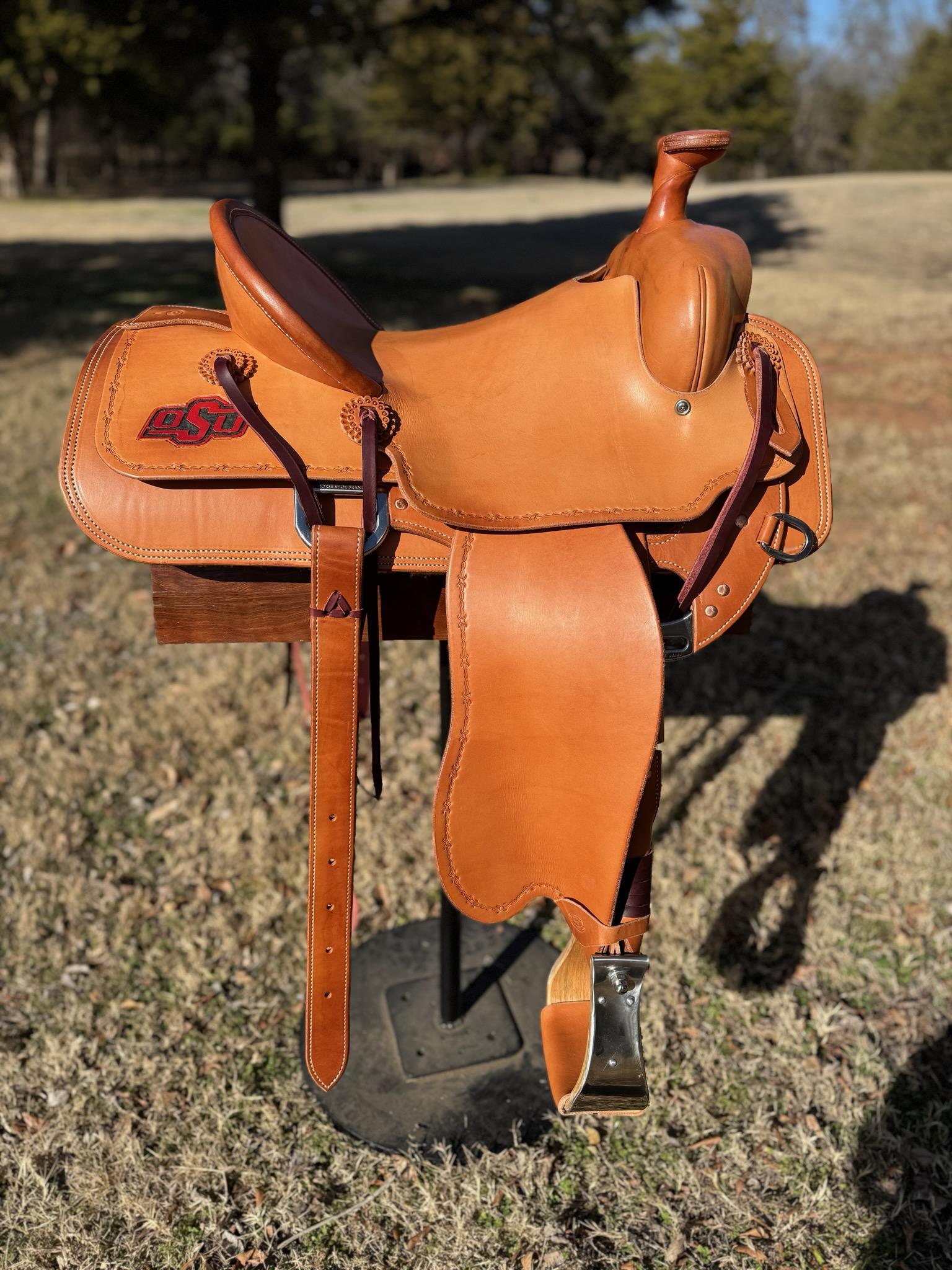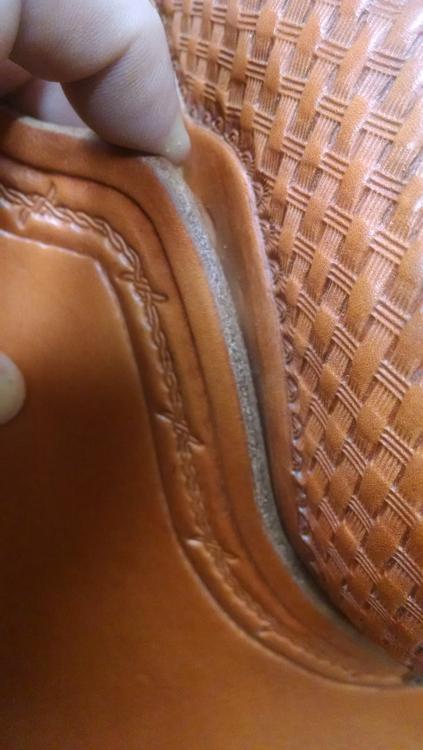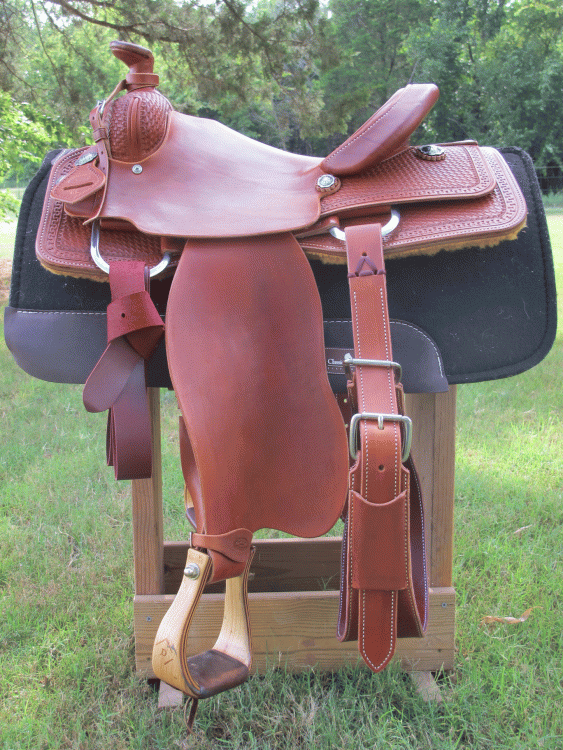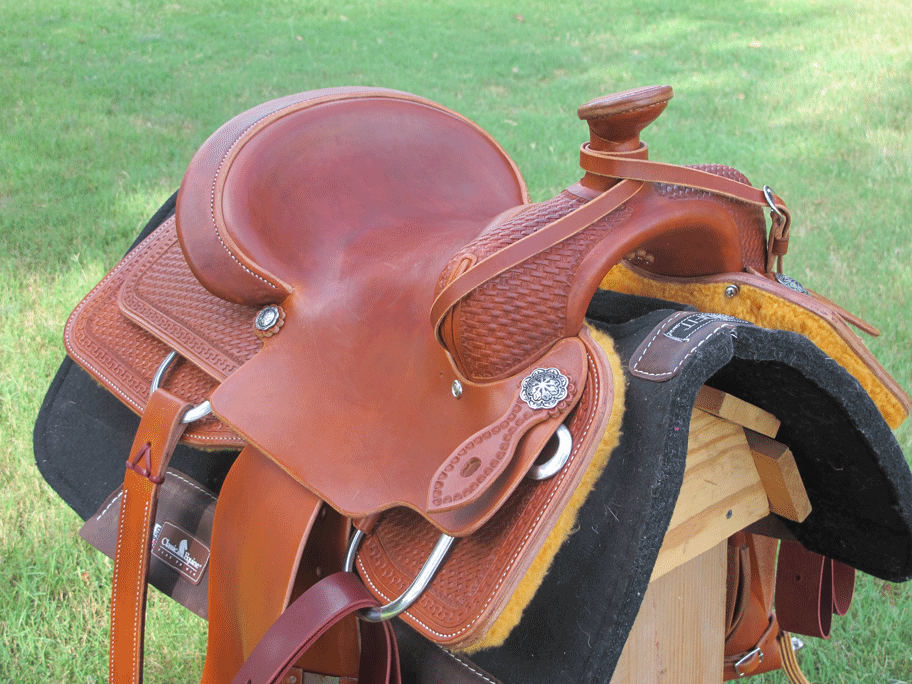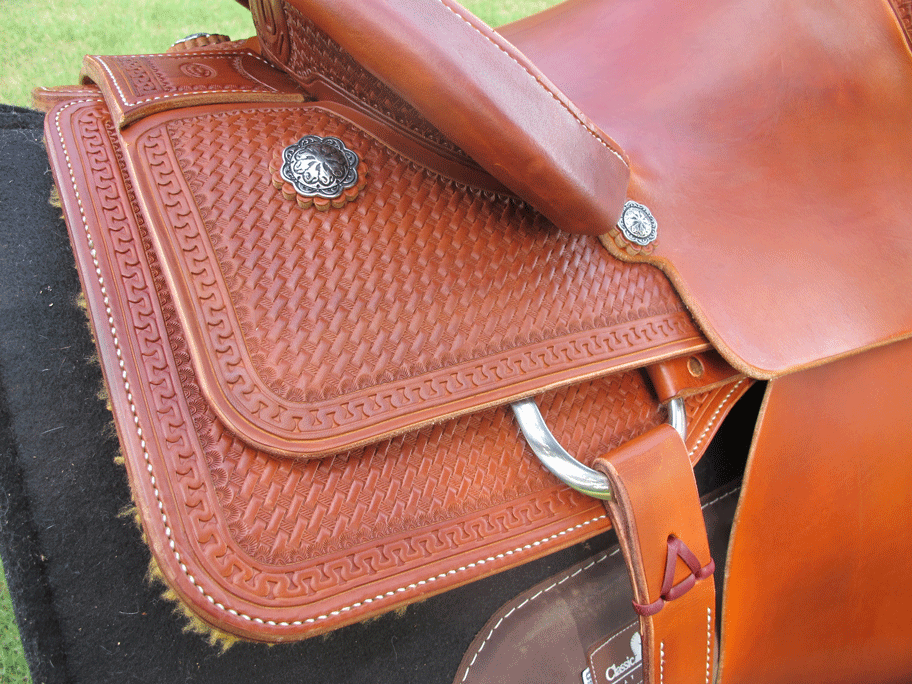-
Posts
486 -
Joined
-
Last visited
Content Type
Profiles
Forums
Events
Blogs
Gallery
Everything posted by rktaylor
-
RFI=Room for Improvement In looking at the saddles I have built, there are few areas where I feel like there is a consistent need for improvement. One of them is the seat fit around the hand hold. I don't seem to be getting the seat to fit as tight as I want in this area. These are from #3 and #5. I feel like I am getting it tight when I fit the seat, but it's too loose after it dries. Any tips are appreciated. Randy
-
Josh, Very nice. I like it. Do you think the pattern would also work when connected to the breast collar dees on the saddle? It looks like it would. Randy
-
JD and Ron, Thanks for the compliments. Howard Council was a renowned (his saddles are coveted around here) saddle maker from Lawton, OK. I am not sure what is different about his tree, but from what I have learned Sonny was making them for him. My friend, who I built this for, is a saddle junkie and he called Sonny to order the tree. I looked at some of Mr. Council's saddles and tried to follow his pattern. I struggled with the rope strap because of the swells. I worked with the customer to place it where he wanted. I agree on the front rosettes. I need to clean up the front jockey area on my saddles. It seems that there are too many after thoughts. I thought most of my edges were pretty good until I started taking pictures. I rubbed that horn a lot, but never got it slick enough. I'll look at the DVD. The cantle binding is certainly an area that I would like to improve. If only it means gaining some confidence. Thanks for the tooling and stitching compliments. This was my last hand sewn saddle (bought a Cobra 4). I like hand sewing, but the time was killing me. I appreciate the comments. I am working on 6 and 7 in hope of finishing them for the Wichita Falls contest and they will serve me well. Randy
-
I haven't lined a belt. I mostly make tack. I try to rub the heck out of my edges with either beeswax or glycerine saddle soap. However, I recently built an edge burnisher from a bench grinder. I still need to work on my methods, but I think it will help. Randy
-
I would also second Big Sioux's comment about finishing latigo edges. I don't know about harness leather, but it sure doesn't get slick like veg tan. Randy
-
Here's saddle #5 that I just finished. It's built on a Howard Council roping tree from Quality Mfg with Hermann Oak leather. I am making improvements in some areas, but still have a lot to learn. Comments and critiques are welcome. Randy
-
I have used veg tan to line breast collars, but that was mainly because that's all I had. They are holding up fine, but I doubt they will hold up like harness leather. More recently I have been using 5-7 oz latigo to back 13 oz HO. I really like that thickness for roping gear. I have been using 3-4 oz veg tan to line headstalls made with 7-8 oz veg tan. That's because I don't have latigo that light and I don't want them too thick. I preshape the outer pieces before gluing the liner. That keeps them from wrinkling too much. I look forward to seeing the final product. Randy
-
Thanks Steve
-
Clyde, Thanks for sharing. I really like Will James saddles. Your work inspires me to do better. Randy
-
Mike, Nice looking saddle. I like the dragonfly and cattails. Kudos for trying some new things like the inlaid seat. I haven't worked up the courage to have exposed stitches on cantle binding, but I will have to tackle it at some point. Thanks for sharing. Randy
-
Ron and Ron, Thanks for the comments. I have my seat formed and ready to glue down, but I think I am going to make a paper pattern. Then I can compare the two before I glue it in. Maybe I'll learn something. I have only built swell fork saddles. It would be interesting to see if people think one method is better suited for this style. Unless really pressed to change, I probably won't. Randy
-
In Jeremiah Watt's DVD, he cuts his seat pattern while fitting it to the tree. Makes the pattern on the left and transfers it to the right. In Harry Adams' book, he makes a paper pattern on the saddle and uses it to cut the seat. I have been using JW's method. Which method do you use? What are the pros/cons of each method? Thanks, Randy
-
Ron, Nice clean looking saddle. As usual, I like your tooling. That looks like a meticulous job to keep the flower spacing as well as you did. I made some seat templates from a couple saddles that I like. I am hoping they will give me a little more guidance in the future. When are you starting on #4? Randy
- 9 replies
-
- wade saddle
- inskirt
-
(and 2 more)
Tagged with:
-
Thanks for all the comments and suggestions. The Cowboy 4500 and Cobra 4 both have optional accessories. Any thoughts on these? They seem reasonably priced for everything that's included, but I don't want to buy a bunch of stuff that I don't need. Thanks, Randy
-
Yetibelle and Big Sioux, Thanks for the comments. That's the type of information I am needing. Randy
-
I am getting really close to taking the plunge and purchasing a sewing machine. Thus I am looking for some advice on features. I don't want to start a debate on pros/cons of manufacturers, I just want to know the right questions to ask. I am making saddles (working on the 5th) and tack mostly, but may use it for other items that I didn't want to make because I have been hand sewing everything. I am guessing that the thickest item I plan to sew is saddle skirts. It seems to me that 1/2" of clearance is not enough, but I just don't know. What about arm length/diameter? Needle and thread size is something I have not studied. Are there any upgrades or extras that I should consider? Any advice is appreciated. Randy
-
Ron, Nice rig. Clean and balanced. I am glad to see you are finding time to work on saddles. If I remember correctly, this one has been in the works for a while. Randy
-
Josh, Congrats on getting another one completed. I share your agony on the mistakes. It's tough to let some go when you know it could be better. I just ordered more leather for a swell cover that I couldn't live with. Thanks for sharing. I like looking at other folks work. Randy
-
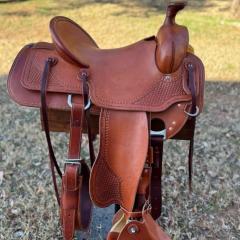
Split the bottom of twisted stirrup leathers?
rktaylor replied to Squilchuck's topic in Saddle Construction
John, If I had a splitter, I would take it down to about 10 oz. However that's just a gut feeling on my part as I have no experience other than twisting 13/15 oz stirrup leathers. Randy -
Thanks Denise, I hope things are going well up north. Randy
-
No one has a story to share?
-

Created my first tooling pattern...
rktaylor replied to Tjstewart's topic in Floral and Sheridan Carving
This is just my opinion and I am certainly not an expert. First, I think your pattern is too wide for the belt. The flowers run into the border. While you could probably make that work, they look crowded to me. Personally, I like the swirling flow that is typical of Sheridan tooling. Your design has 'hints' of that style, but it is also kind of linear. My suggestion is to consider the individual elements (leaves, scrolls, flowers, etc.) and how they flow together. Just my opinion. Take it for what it cost you. Randy -

Replacing Breast Collar Dee
rktaylor replied to rktaylor's topic in Saddle Identification, Restoration & Repair
John, I replaced the dee in its original position. I cut a small slot in the fleece (synthetic) just large enough to let me work. It was less than an inch. This allowed me to get the old rivet out and gave me enough room to work on the new one. Then I used some contact cement to glue the fleece to the skirt. I thought about sewing the fleece, but figured it wouldn't really help anyway. It was a pretty simple job. Randy -
I am starting to build a saddle on a Howard Council tree from Quality Mfg. I have researched Mr. Council a little, but am interested in learning more. Any information is appreciated, but of particular interest are his trees. Most of the ropers who have one of his saddles are very complimentary of it's fit and function. Does anyone know if he built his own trees? It looks like there is a Quality tree in the background of a video about him. Thanks in advance, Randy
-
Well done. It looks fantastic. Randy


